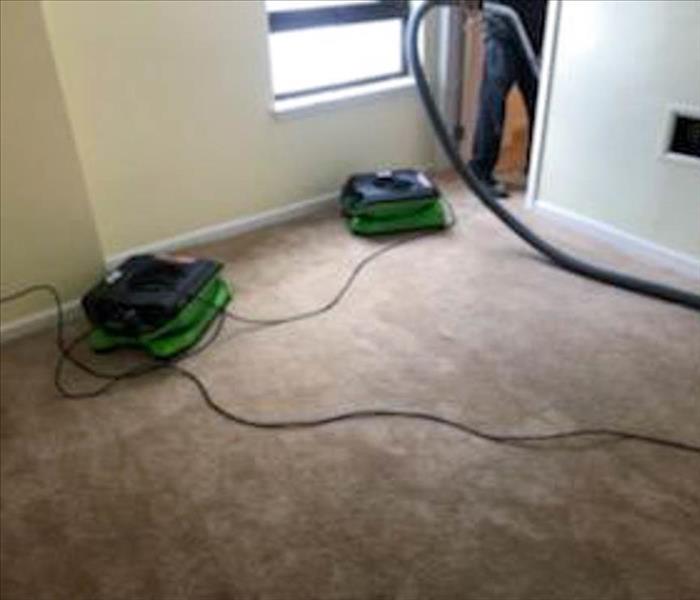Tips for Homeowners to Stay Safe During Water Damage Cleanup
10/16/2023 (Permalink)
 While minor water damage cleanup can often be handled by homeowners, many situations may require professional assistance.
While minor water damage cleanup can often be handled by homeowners, many situations may require professional assistance.
Water damage can be a stressful and disruptive event for homeowners. Whether it's a burst pipe, a flooded basement, or a roof leak, responding quickly and effectively is crucial to minimize damage and prevent long-term problems. However, in the midst of the cleanup process, it's essential to prioritize your safety. In this blog post, we will discuss important tips and precautions to protect yourself during water damage cleanup.
Personal Protective Equipment (PPE)
Before you begin the cleanup process, make sure you have the necessary personal protective equipment (PPE) to protect yourself from potential hazards. This may include waterproof gloves, protective eyewear, rubber boots, and a face mask. PPE will help shield you from contaminants in the water, such as bacteria, chemicals, and sewage, reducing the risk of health issues.
Disconnect All Power Sources
Water and electricity do not mix well. To avoid electrocution or other electrical hazards, it's crucial to disconnect all power sources in the affected area before starting the cleanup. This includes turning off the electricity at the main breaker or calling a professional electrician to ensure it is done safely. Never step into standing water if there is a risk of electrical appliances or outlets being submerged.
Identify Potential Hazards
Water damage can weaken structures, making them unstable. Before entering the affected area, conduct a thorough assessment of the surroundings to identify any potential structural issues, such as sagging ceilings, compromised floors, or crumbling walls. Additionally, be cautious about slippery surfaces caused by water, mud, or debris. Using sturdy and stable pathways, wearing non-slip footwear, and avoiding unstable areas can help prevent accidents and injuries.
Dispose of Contaminated Items
Water damage often results in the destruction of personal belongings and furniture. Depending on the level of contamination, some items may need to be properly disposed of to ensure your safety. Porous materials like carpets, padding, and upholstered furniture that have come into contact with black water or sewage should be discarded. Follow local regulations and guidelines for disposing of contaminated items to prevent risk.
Practice Proper Cleaning and Sanitization
Use EPA-approved disinfectants to thoroughly clean surfaces and prevent the growth of mold and bacteria. It's essential to clean not only visible areas but also hidden spaces, such as behind walls or under flooring, where moisture may have seeped. Proper ventilation with fans and dehumidifiers can help expedite the drying process and reduce the risk of mold growth.
Seek Professional Assistance
While minor water damage cleanup can often be handled by homeowners, certain situations may require professional assistance. If the water damage is extensive, contaminated with sewage, or poses a risk to your health and safety, it's best to call a reputable water damage restoration company. These professionals have the expertise, equipment, and experience to handle more complex restoration tasks, ensuring a thorough and safe cleanup process.
Water damage cleanup requires swift action, but it's essential to prioritize your safety throughout the process. By wearing appropriate personal protective equipment, disconnecting power sources, identifying potential hazards, properly disposing of contaminated items, practicing proper cleaning and sanitization, and seeking professional help when needed, you can protect yourself from potential dangers. Remember, your well-being is paramount during water damage cleanup, and taking the necessary precautions will help you navigate the process safely and effectively.

 24/7 Emergency Service
24/7 Emergency Service